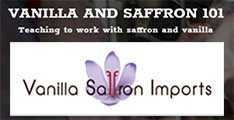By Alexandra Raij. Pintxos encompass everything from a piece of ham draped over a slice of garlic-rubbed bread or a simple croqueta to small, colorful multilayered sandwiches almost too tall to cram into your mouth. Some involve twenty ingredients, including sauces and vinaigrettes, others are little stews, and still others are simply poached or scrambled eggs with caviar. All of them, however, are designed to be eaten standing up, held in one hand; the other hand, of course, should be holding a drink. They’re also intended to tempt the eye: at bars throughout the Basque Country, they’re displayed on platters, positioned more or less as the first thing you see when you step up to order a drink. Tiers of these canapé-style snacks cascade over the bar, which, unlike the American bar, is not a place to sit with a plate or drink but rather a place to stand at the same level as the bartender.
Ordering a pintxo is a personal experience: the bartender will often pass you a small plate and encourage you to pick your own. Alternatively, you point and the bartender uses small tongs to transfer a couple onto your plate. But eating these one- or two-bite delicacies is definitely a social experience. You enjoy them with friends, hopping from bar to bar as the evening blooms into night, and you return to them the morning after to help ward off a hangover, as I did the day after my wedding, when I found myself, still wearing my dress, propped up at a bar and devouring a tortilla at 7:00 a.m.
Pintxos are of such great importance to Basque life that an entire vocabulary has been built around them. When people go out for a pintxos crawl, they meet with their kuadrilla (group of friends). Going from place to place is known as going out for potes (drinks).Usually the crawl starts in a central place where one person is given the task of holding the money for the evening. Everyone contributes to the bote —a typical contribution is fifteen euros— and the person in charge of the bote pays the bill at every bar. Once you get to the bar, you can have a zurito, or little glass of beer, or a txikito, or small glass of wine. If you’re thirstier, there is a caña, or bigger glass of beer, or even a katxis, or liter of beer. There is also a kalimotxo, a mix of wine and cola similar to a wine cooler, but it is consumed primarily by younger people and is a drink you’re meant to outgrow. Then there is vermut in the form of Marianito blanco y rojo.
Inspired to host your own Basque-style tapas party? Get started with these recipes for pintxos (pictured at the original article)
Alexandra Raij’s food has won numerous accolades, including New York magazine’s “Best Tapas” and Time Out New York’s “Most Addictive Bar Snack.” In 2009, Travel & Leisure named Txikito one of its 50 Best New U.S. Restaurants. Raij was voted Eater’s2012 Chef of the Year and featured as one of Bon Appétit’s six picks for its 2008 feature “Women Chefs: The Next Generation.” She has appeared on Iron Chef America, Food Curated, Foodography, and No Reservations three times.
RELATED BOOK
The Basque Book
by Alexandra Raij & Eder Montero & Rebecca Flint Marx



 Lagun bati bidali
Lagun bati bidali Komentarioa gehitu
Komentarioa gehitu








